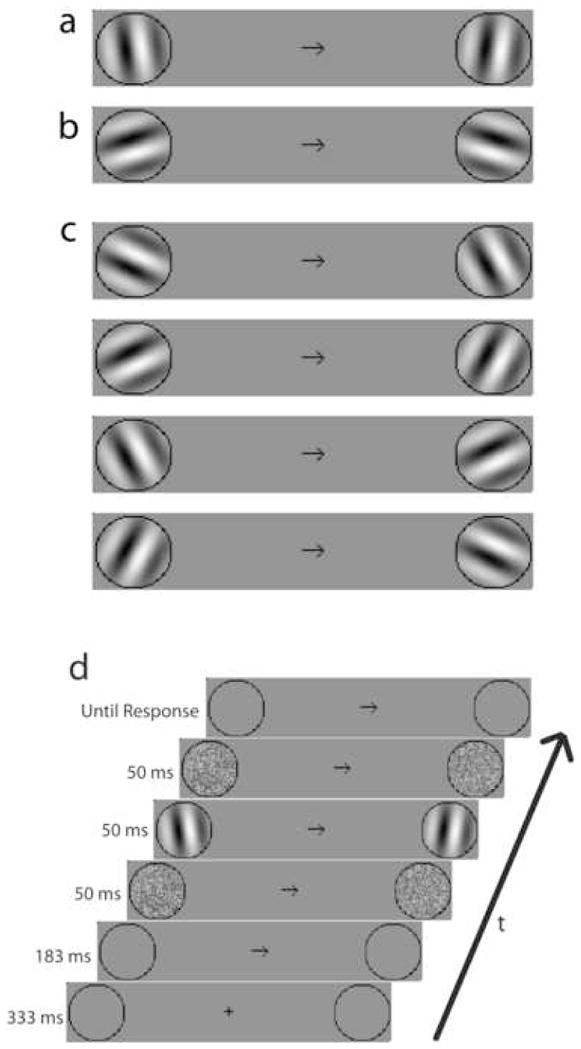Figure 3.

Examples of oriented Gabors used in different experiments, with a sample response cue. Observers reported the orientation (tilted θ degrees clockwise or counter-clockwise of a specified base angle, or judgment frame, ω) for the cued object (single-object) or for the cued object first (dual-object report condition). (a) Sample Gabors tilted clockwise (right) or counterclockwise (left) of vertical, from Experiment 1A. (b) Sample Gabors tilted clockwise (right) or counterclockwise (left) of horizontal, from Experiment 1B. (c) Sample Gabors tilted clockwise (left) and counterclockwise (right) of left diagonal (top), of the right diagonal (top-middle), or of the left-right diagonals (bottom-middle), or the right-left diagonals (bottom), from Experiments 2 and 3. (d) A sample trial sequence with high external noise, beginning with a fixation cross, a cue for first response, a sequence of noise-Gabor-noise frames, and finally a response cue. For zero noise conditions, the noise frames are replaced with neutral gray frames. For the object on the left of the display, subjects pressed the ‘f’ (clockwise) or ‘d’ (counterclockwise) key with the left hand; for the object on the right of the display, subjects pressed the ‘k’ (clockwise) or ‘j’ (counterclockwise) key with the right hand.
